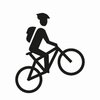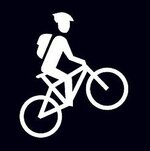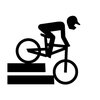Which trail is best for me?
We have established standards which apply throughout Tyrol - consistent grades of difficulty mean you can assess the tour as accurately as possible. Right from the planning stage you can match your fitness and riding ability to the relevant tour. This means you can look forward to enjoying mountain biking with no problems!
Blue: easy
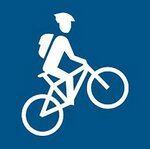
Cycle path with a good surface (fine gravel, asphalt or comparable surface) which is family-friendly and suitable for ordinary bikes, uphill and downhill gradients between 0% and 5%, on short trails maximum 10%. Alternating uphill and downhill sections, no continuous uphills. Vehicle-free or little used by road vehicles. There are no particularly dangerous sections or, if so, they are indicated by special signposting.
Red: medium difficult
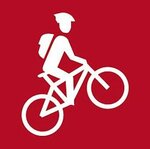
Requires sports cycling ability and especially knowing how to ride defensively. Mountain biking equipment is recommended. Uphill and downhill sections between 5% and 12%, on short trails up to a maximum of 17%. The trail has blind bends. Bikers must expect to encounter road vehicles taking up the full width of the path. The composition of the path, including the quality of the surface, drainage facilities (e.g. channel drains), closure devices (e.g. barriers), the safety measures (e.g. missing railings and fences) and notices about dangerous sections are all intended for farm and forestry traffic using tractors and HGVs. Such installations could in themselves pose a danger to bikers. Bikers must at all times be prepared to come across trails closed for operational reasons (e.g. logging and transport), materials stored on or by the trail, equipment and stored machinery and sections which have become dangerous as a result of natural events. Steep slopes adjoining the trail are not made safe.

Green: very easy
- Riding Ability: For Beginners! Basic Mountainbike riding technique required such as Balance and braking skills, in general little or no trail experience
- Riskiness: Crashes from low hights on easy terrain possible. No risk of falling.
- Trail composition: even and smooth surface good grip, no rocks and roots
- Gradients: very flat: average ≤ 9%; max. 15 %
- Turns: long, wide and flat turns and turn excits
- Trailwidth: wide: min. 1 m
- Jumps: None, or very easy to roll over
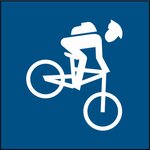
Blue: Easy
- Riding Ability: For beginners and intermediates! Intermediate mountainbike riding technique required such as good balance and good braking skills, good weight shifting to overcome obstacles, good ability of riding turns, jump technique maybe required in parts of the trail, generally trail experience required
- Riskiness: Crashes from high hights on easy terrain possible. No risk of falling.
- Trail composition: even and smooth surface, good grip with some rocks and roots
- Gradients: flat: average ≤ 12%; max. 30 %
- Turns: sharp turns possible but long and flat turn excits
- Trailwidth: wide: min. 0,6 m
- Jumps: easy to rollover, main line, safe line. Alternative lines for intermediates possible.
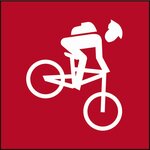
Red: medium difficult
- Riding Ability: For intermediates! Already special mountainbike riding technique required such as very good balance and very good braking skills, very good weight shifting to overcome obstacles, very good ability of riding turns, jump technique required , lot's of trail experience required
- Riskiness: Crashes from high hights on heavy terrain possible. No risk of falling.
- Trail composition: loose, rough and fast switching surface with rocks and roots, bad grip
- Gradients: steep: average ≤ 20%; max. 60 %
- Turns: very sharp and steep turns and turn excits possible
- Trailwidth: wide: min. 0,3 m
- Jumps: Gaps possible, but always a alternative line to pass the jump

Black: difficult
- Riding Ability: For experts only! Special mountainbike riding technique required such as expert Level of balance and braking skills, expert weight shifting to overcome obstacles, expert ability of riding turns, jump technique required , expert trail experience required
- Riskiness: Crashes from high hights on heavy terrain possible. Risk of falling. Danger of life!
- Trail composition: loose, rough and fast switching surface with big rocks and roots, very bad grip
- Gradients: very steep: average > 20%; max.> 70 %
- Turns: very sharp and steep turns and turn excits possible
- Trailwidth: very narrow: min. 0,2 m
- Jumps: Gaps possible with no alternative line to pass







